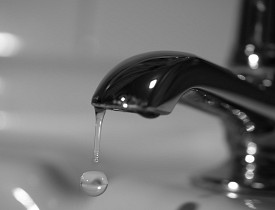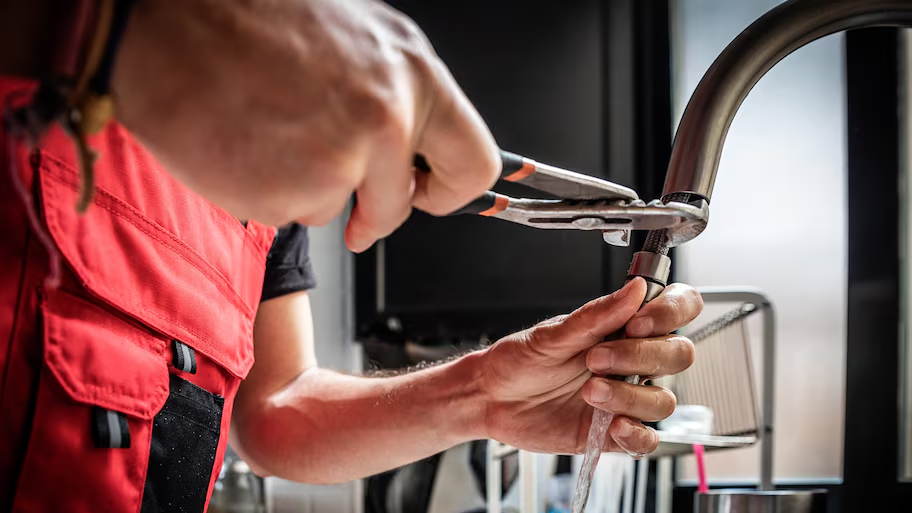Understanding the Value of Dealing with a Dripping Faucet
Understanding the Value of Dealing with a Dripping Faucet
Blog Article
Presented here in the next paragraphs yow will discover lots of excellent resources around Leaky Faucets: Why They Happen & What to Do About Them.

Trickling taps may appear like a minor inconvenience, yet their influence exceeds just the inconvenience of the sound. From drainage to sustaining unnecessary economic prices and wellness threats, overlooking a trickling tap can cause different repercussions. In this short article, we'll explore why it's important to address this usual house problem quickly and effectively.
Wastefulness of Water
Ecological Impact
Dripping taps contribute significantly to water wastefulness. According to the Epa (EPA), a single tap dripping at one drip per secondly can squander greater than 3,000 gallons of water annually. This not just stress water sources but additionally affects ecosystems and wildlife depending on them.
Step-by-Step Guide to Dealing With a Dripping Faucet
Tools Called for
Before attempting to repair a leaking faucet, collect the essential tools, including a flexible wrench, screwdrivers, substitute components (such as washers or cartridges), and plumber's tape.
Usual Tap Issues and Their Solutions
Identify the kind of faucet and the specific problem triggering the drip. Typical issues consist of damaged washing machines, corroded valve seats, or malfunctioning O-rings. Describe producer directions or on the internet tutorials for step-by-step assistance on repair work.
Financial Costs
Enhanced Water Bills
Past the ecological effect, leaking faucets can inflate water costs considerably. The collected wastage with time translates right into higher energy expenses, which can have been prevented with prompt repairs.
Prospective Residential Property Damages
Moreover, extended leaking can cause harm to components and surface areas surrounding the faucet. Water accumulation can trigger discoloration, rust, and also architectural concerns if left neglected, causing additional repair service costs.
Wellness Issues
Mold and Mold Growth
The constant presence of wetness from a dripping faucet creates a suitable setting for mold and mildew growth. These fungis not only endanger interior air high quality yet likewise present health risks, specifically for people with breathing conditions or allergies.
Waterborne Illness
Stagnant water in dripping taps can become a breeding ground for germs and various other microorganisms, increasing the risk of waterborne diseases. Pollutants such as Legionella germs flourish in stationary water, possibly causing major diseases when ingested or inhaled.
DIY vs. Specialist Repair
Pros and Cons of Do It Yourself Repair Work
While some might attempt to repair a trickling tap themselves, DIY repair services feature their own collection of challenges. Without correct understanding and devices, DIY attempts can aggravate the problem or bring about incomplete repairs, prolonging the trouble.
Benefits of Working With a Professional Plumber
Working with a specialist plumber makes sure that the underlying cause of the trickling faucet is dealt with efficiently. Plumbers have the expertise and tools to diagnose and fix tap problems efficiently, conserving time and minimizing the risk of more damage.
Environmental Duty
Private Contribution to Conservation
Taking responsibility for dealing with trickling faucets straightens with more comprehensive initiatives toward water preservation and environmental sustainability. Every individual's activities jointly make a significant effect on preserving precious sources.
Sustainable Living Practices
By prioritizing prompt repair services and adopting water-saving habits, individuals add to sustainable living techniques that benefit both existing and future generations.
Preventive Measures
Normal Upkeep Tips
To prevent trickling faucets, carry out regular upkeep such as cleaning up aerators, checking for leaks, and replacing damaged parts quickly. In addition, think about mounting water-saving tools or updating to extra efficient fixtures.
Value of Prompt Repair Works
Resolving leaking taps as soon as they're observed protects against additional water wastage and possible damages, ultimately conserving both water and money in the future.
Influence On Residential Property Worth
Assumption of Well-Maintained Residential Or Commercial Property
Maintaining a home in good condition, consisting of addressing upkeep concerns like trickling taps, improves its perceived value and worth among prospective customers or lessees.
Impact on Resale Value
Residences with properly maintained plumbing components, consisting of taps, command greater resale values in the realty market. Attending to leaking faucets can add to a favorable perception during residential or commercial property assessments and settlements.
Final thought
Addressing a dripping tap goes beyond simple benefit; it's an important step toward saving water, lowering financial prices, and protecting health and wellness and property. Whether via do it yourself fixings or specialist help, acting to repair trickling faucets is a tiny yet impactful means to promote responsible stewardship of sources and contribute to a much healthier, more sustainable future.
How to Fix a Dripping or Leaky Faucet
A leaking faucet is one of the most common problems that homeowners encounter, but it being commonplace doesn’t make it any less annoying. The constant drip drip drip of a leaking bathtub faucet, showerhead, or sink tap can disturb your home’s serenity. Left neglected, a dripping faucet can also result in higher water bills and discoloration or mold growth in your sink or plumbing fixtures.
Fortunately, you don’t have to be a trained plumber to know how to stop a dripping faucet. With some basic tools, replacement parts, and a little patience, leaky faucet repair is a breeze. In this article, we’ll explain what causes dripping faucets and how you can fix them.
What Causes a Leaking Faucet?
Kitchen and bathroom faucets come in all manner of designs, but most involve some combination of valves, O-rings, seals, and washers. The O-ring is usually the weakest link, but any one of these pieces can wear down over time. Heat, moisture, temperature fluctuations, minerals, mold, and movement can contribute to warping and corrosion, breaking the watertight seal. This just comes with the territory of being a homeowner. Everything is always subject to wear and tear, and some component parts of your appliances and fixtures need to be replaced on occasion. At least replacement O-rings are cheap!
More rarely, dripping faucets can be a symptom of excessively high water pressure. Were this the case in your home, you would probably notice that the leak is not isolated to one faucet. Water pressure issues are harder to resolve on your own. We recommend contacting a professional plumber if you suspect your water pressure is too high.
How to Fix a Dripping Faucet
Pipe wrench or monkey wrench Allen wrench set Screwdrivers Old towel or rag Shut off the water.
Before you do anything, you need to turn off the water to keep from drenching your kitchen or bathroom. You should find a valve under the sink and against the wall. Once you’ve turned this valve, try turning the faucet on to confirm that the water source has been cut off.
If you can’t locate your local valve for the faucet you’re working on, you can always shut off the water to the house at the main valve. Of course, this will prohibit anyone from using the sinks, showers, or toilets while you’re working on the faucet that’s giving you trouble.
Plug or block the drain.
You’ll be disassembling the faucet and removing some small bits of hardware. Plug the drain with a stopper or rag to avoid the possibility of a small screw falling into your P-trap.
Take apart the faucet assembly.
There are several varieties of kitchen and bathroom faucets, each with its own manner of assembly. For detailed instructions on how to disassemble your faucet, you can refer to the fixture’s manual or contact the manufacturer. If you know whether you have a ball, disc, cartridge, or compression faucet, you can find detailed schematics online.
In general, you need to begin by removing the faucet handles. You might notice a small screw that you’ll need to remove with a screwdriver or Allen wrench. If you don’t see any visible securing hardware, it’s likely hidden under a decorative cap that can be unscrewed or popped off with flathead screwdriver.
Remove each piece methodically, consulting a schematic when necessary. Take notes or arrange the pieces in such a way to make it easier to correctly reassemble the faucet later.
Remove the cartridge.
Once you’ve removed the handles and securing hardware, you should be able to remove the valve cartridge or stem. Some cartridges will slide right out. Other faucet models will require you to loosen a nut with a pipe wrench before you can remove the valve stem.
Examine the exposed hardware.
With the cartridge or stem removed, inspect the component parts. Check the rubber O-rings for wear and tear. Also examine the seat washer for corrosion or other damage. These pieces are usually the responsible parties for a dripping faucet, but it’s worth inspecting the other component parts while you have the faucet disassembled.
Find replacement parts.
Once you’ve identified which faucet component has failed, find an identical replacement. Your local hardware store should have O-rings, seat washers, and other standard components in stock. If you have a luxury or uncommon faucet, you may have to contact the manufacturer for a replacement part.
It’s a good idea to take your old parts with you to the hardware store so you can compare them with the store’s inventory and be sure you’re purchasing the correct replacement.
Reassemble the faucet.
With your new parts in hand, reconstruct the faucet and handles. Don’t be tempted to overtighten screws or nuts. You might think this could create a better seal, but it can instead damage or bend a delicate part of the assembly and create a new problem for you.
Turn on the water and test the faucet.
The only thing left to do is test your work. Unplug the sink, turn the water back on, and try the faucet. Congratulate yourself on a job well done!
https://www.libertyhomeguard.com/how-to-fix-a-dripping-or-leaky-faucet/

I was shown that write-up on What Causes Leaky Faucets & How To Fix Them through someone on our other website. Do you know about someone else who is in to What Causes Leaky Faucets & How To Fix Them? Feel free to share it. I am grateful for your time. Return soon.
Report this page